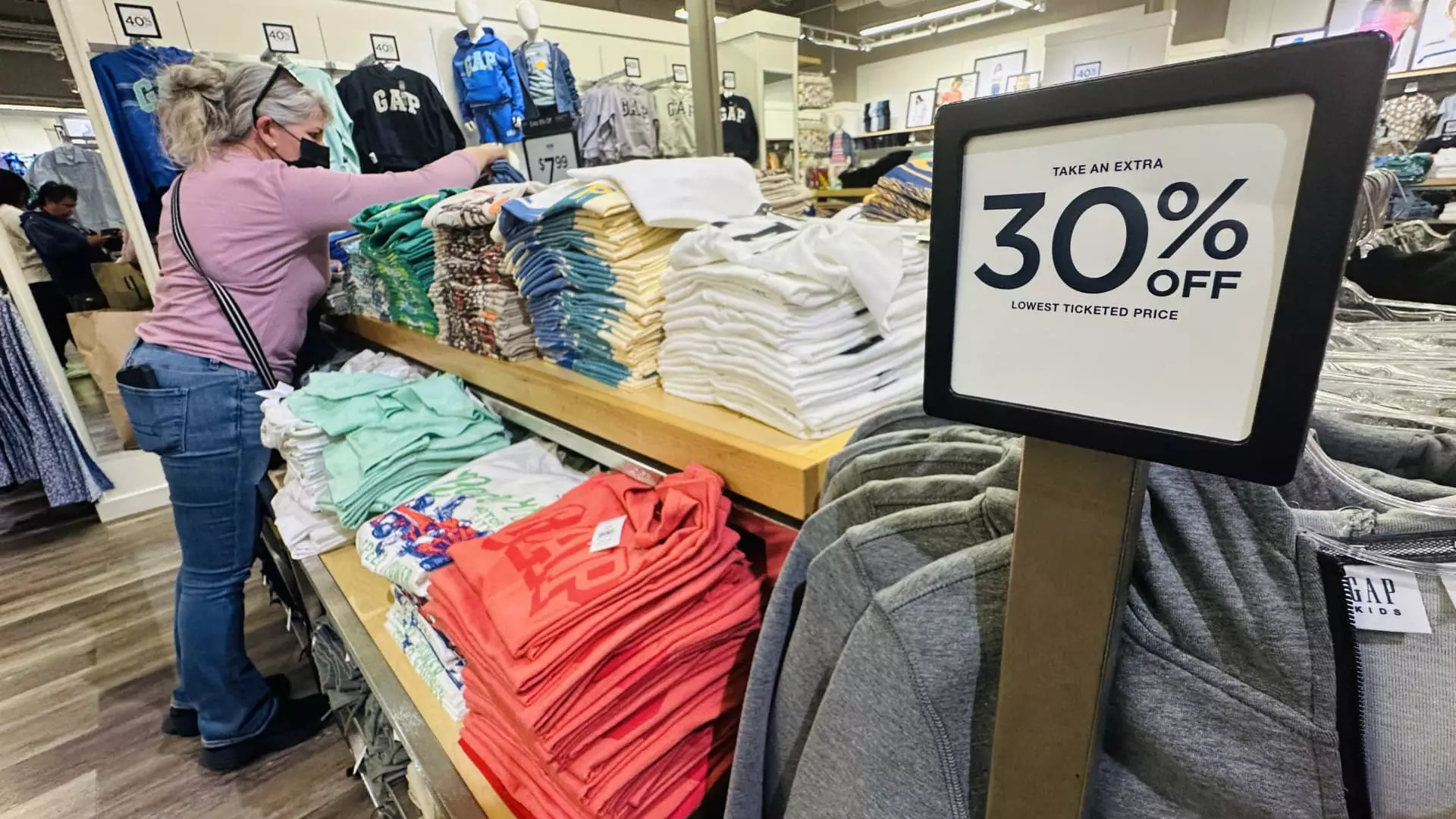As the backdrop of an escalating trade conflict with China unfolds, American consumers, particularly those in the middle and lower classes, find themselves at the mercy of trade policies that will drastically affect their wallets. According to forecasts from the Yale University Budget Lab, we could be staring down the barrel of a staggering 64% increase in apparel prices as a direct consequence of punitive tariffs. Tariffs on imported clothing and footwear, already a substantial part of U.S. retail consumption, will create an unpleasant situation where ordinary Americans pay to fuel an economically destructive trade war. If history is any guide, this economic strategy is not only misguided but perilous for consumers who can least afford it.
The Middle-Class Squeeze: Inflation Meets Inequality
Imagine a world where the cost of clothing skyrockets due to government intervention. This is not merely a dystopian vision; it’s the immediate future we may be facing. The Trump Administration’s universal tariff rate of 10% may seem innocuous on paper, but it has far-reaching implications. The apparel industry, which relies heavily on imports — 97% of our clothing comes from abroad — will naturally pass these costs onto consumers. Predictably, low and middle-class households, already grappling with inflation, will feel the most significant impact. Indeed, rising apparel prices, projected to stay 27% higher in the long run, exemplify a state of economic malaise that’s entirely avoidable.
Julia Hughes, President of the United States Fashion Industry Association, poignantly captures the tension of the moment: “We are concerned about the escalating trade war with China. Ultimately no one wins.” If that statement doesn’t echo the voices of the struggling middle class, what does? We are not just watching a policy decision unfold; we are witnessing a shift that will fundamentally alter the landscape of American consumerism.
Trade-Down Behavior: The Rise of Secondhand Shopping
As consumer confidence sinks and prices rise, an interesting phenomenon is taking root: “trade-down” behavior. Recent research from Empower reveals that three-quarters of consumers are already seeking lower-cost alternatives, increasingly turning to secondhand markets and discount stores. Living in a time when buying luxury is becoming an act of financial recklessness is disheartening, yet not surprising. The trending narrative is shifting away from high-end brands; it speaks volumes about our economic realities. “If you can’t afford Louis Vuitton, you are going to buy Coach. If you can’t afford Coach, you are going to buy the knock-off,” asserts Shawn Grain Carter, a fashion expert. This behavior reflects a deeper societal problem—one where access to quality goods is increasingly restricted by income.
What this points to is a familiar cycle where trade restrictions inadvertently lead to more substantial economic divisions. Traditionally, high tariffs have paved the way for counterfeit markets to flourish, a reality that poses risks not just to established brands but to consumer integrity and safety.
Impact on E-Commerce and Consumer Choice
Among many contentious points lies the revocation of a popular tax loophole known as “de minimis,” an exemption that allowed goods worth under $800 to enter the U.S. without tariffs. This move will undoubtedly ricochet through e-commerce, as low-cost imports from China and Hong Kong also face heavier restrictions. Retailers like Shein and Temu may struggle under the weight of a tariff-laden market, and consequently, so will their customer base. As David French from the National Retail Federation wisely noted, “Tariffs are a tax paid by the U.S. importer that will be passed along to the end consumer.” The long-term implications for consumer choice also raise serious questions about our domestic market’s viability.
Worryingly, as tariffs amplify, the already sprawling resale market is evolving. E-commerce platforms specializing in secondhand goods are poised for explosive growth, a necessary evolution in an economy straining under rising costs. The resale market’s projected valuation of $291.6 billion by 2029 underscores how consumers are adapting. However, it also reveals a concerning gap between supply and demand; there simply aren’t enough secondhand items to meet rapidly-growing consumer interest.
The Economic Burden: A Call for Reflection
As we watch these tariffs take shape, one must question who stands to gain from such policies. With no tangible benefits for middle-class Americans, this burgeoning economic crisis reveals a bitter truth: we are leaving our citizens behind. The chaos rippling through the apparel industry signals urgency for a reevaluation of our country’s trade policies. The higher costs foisted onto designers, retailers, and ultimately consumers add up to a potent cocktail of inflation and inequality. It’s an economic dilemma reminiscent of eras gone by, but we still have a chance to rewrite the narrative. Instead of celebrating the growing tariffs, we must grapple with their profound implications on our socioeconomic landscape. If we don’t act now, we risk creating an economy where genuine consumer choice and access to affordable goods gradually wither away.

